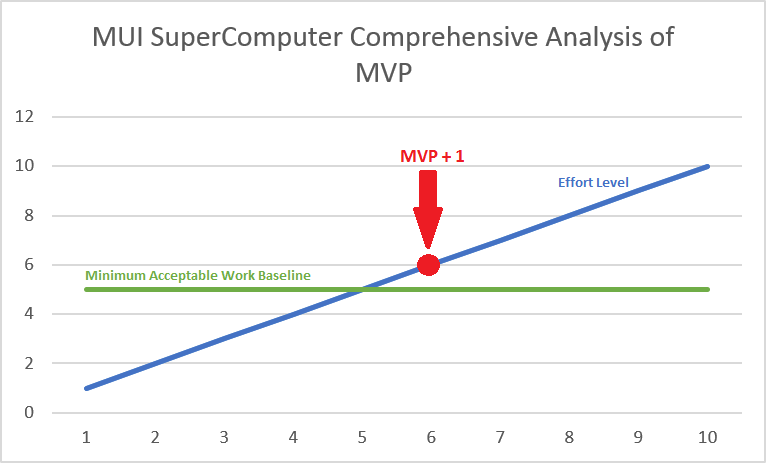Muffled Screams and Broken Dreams: The Great Corporate Time-Heist — Part 3: Survival
Tips, tricks, and treats for surviving your work environment and the introduction to the next great innovation for the office: MVP + 1

Welcome to the third article of our multi-part series affectionately titled Muffled Screams and Broken Dreams: The Great Corporate Time-Heist. You can find the other articles here:
1. Intro: The Aworkening
2. Part 2: Reconnoitering and Shit
3. Part 3: Survival — MVP+1 <- You are here
4. Part 4: Evasion — Counter-Strategy Strategy
5. Part 5: Resistance — Spite of a Warrior
6. Part 6: Escape — Fleeing the Scene
Part 3: Survival — MVP+1
What are we doing? Most of the time, your guess is as good as ours. Right now though, we’re focused on the corporate workplace, the toll working a corporate-esque job takes on a person, and what to do about it. This is article 3 of our series. For those of you with the courage and strength of will to do more by doing less, we’ve got a professional certification available to certify that you’re wicked good at strategy and shit.

Dipping a Toe into a Deep Lake
In article two, we spoke about getting to know the lay of the land of your physical workplace, understanding the psychological factors in the workspace and understanding your technological boundaries. These observational skills will act as the foundation to the remaining articles in our series that will discuss Survival, Evasion, Resistance, and Escape. If that sounds super familiar, that’s because it is: SERE.
In this article we’re going to discuss surviving in the workplace, and we’re going to do that the only way we know how: by introducing something that’s pretty simple but calling it something that sounds swanky and business-ey. THE STRATEGY CORE CONCEPT. All you really need to know is that this is a specific strategy for the workplace that fits our SERE theme, and if you master all of them you will gain ULTIMATE POWER¹.
¹results not guaranteed².
²but there’s a good³ chance it’ll happen.
³it’s actually pretty low.
Survival
That’s very interesting. What’s next?
Donald Duck — Donald in Mathmagic Land
Strategy Core Concept: Minimum Viable Product + 1
The concept of the Minimum Viable Product has been around for a while, but it’s mostly been for evaluating a product before it goes to market. With MVP we ask the question: What is the bare minimum of acceptability? The idea is then to develop the product so that you’re spending the least amount of money without causing mass chaos and rioting over a lackluster product offering thereby maximizing profit and minimizing outrage. In this case, the product is you, and the metric by which we’re measuring is your overall effort. So, we arrive at the slightly adapted question: What is the bare minimum amount of work you need to do (or be perceived doing) where you aren’t getting fired or getting negative marks on your employee record? Unfortunately, doing the absolute minimum is somewhat frowned upon, so we arrived at the MVP+1 concept. It’s essentially doing (or being perceived as doing) a teensy bit more than the absolute acceptable minimum. Here at MUI we’ve invested a lot of time and money into hyper complex computing systems, so it’s a bit of a flex, but here’s a graph from said ultra super hyper computer using a large hadron blockchain AI neural network of edge computing nodes (patent pending):

The graph shows where you want to be (red dot with the bigass arrow) in relation to the minimum acceptable work baseline and your own effort level.
Okay, MUI that’s great and all, but why am I doing this?
We’ll drill down into this topic a bit more in the later articles, but it basically boils down to the following:
- You and your employer have entered into a contract where you bring labor to the table and they bring compensation. You’re a person of your word, so you want to honor that contract. HOWEVER, there’s a good chance your employer hasn’t engaged with you entirely in good faith. Your employer wants you to provide more labor while their end of the bargain begins to lag. They do this by creating competition with your fellow coworkers, creating psychological traps, and outright threatening you without upping their end of the bargain. You’ll experience this in the form of lateral promotions or the evolution of your work while your compensation gets left in cro-magnon era.
- MVP+1 allows you to navigate the workplace with the knowledge that you are still maintaining your part of the bargain (good on ya!), but you’re not allowing yourself to get fleeced into giving more than you’re contractually bound to.
- Most importantly, you’re using MVP+1 to liberate the most valuable commodity in this universe — time. It’s currently being stolen from you, but you can take steps to safeguard what little we have from those who wish to steal it from you.
Now that we’ve gotten that out of the way, let’s begin with how to apply the MVP+1 strategy in your day-to-day activities.

Determining the Effort Baseline
The effort baseline is all over the place for different workplaces, but there’s some common threads we can talk about here. You’ll probably have to make some minor adjustments based on your particular situation. Additionally, your work environment will always have underlying dynamic changes. It’s important to periodically reevaluate your situation to make sure that the baseline hasn’t shifted — this way you’re consistently doing the absolute minimum(+1).
- Job Description
Start with your job description. View this as the work you signed up to do and the contract on which you shook hands with your employer. You’ll probably see some ‘outs’ that your employer has built into the job description to justify them asking more of you without them bringing more to the table — things like: “and work otherwise specified” or “additional duties as assigned”. Ignore these. Find the items where your performance would be measurable and figure out the amount of effort required to come in just above those measurements. Use your judgement to determine whether the work you’re doing is within the acceptable boundaries of your job. Be wary. It’s a slippery slope and the smart businesses will bring the water to boil one degree at a time. It’s good to reevaluate what you’re doing on a month to month basis. - Internal Controls and Policies
Your work will call them things like Key Performance Indicators, Performance Guidelines, Productivity Metrics, etc… They’re all pretty much the same thing. These are mandates for your minimum acceptable work requirements. Call X number of people a day. Close X number of support tickets. Make note of these and how much effort is needed to complete just above the bare minimum required. Don’t be afraid to get a feel for what others in your position are responsible for as well. It’s not uncommon for two people to be paid the same while one is doing 90% of the work. Take note of these cases. In these situations, you may think the bar is higher than it actually is but it just turns out you’re the person pulling 90% and that’s just something that others expect of you. - Perception — Coworkers
Work and effort aren’t necessarily always about hitting the required metrics each month. It’s also about how others perceive you and your work habits. People want to commiserate in the workplace. No one wants to feel like they are doing more work than their peers. On the flip side, coworkers will typically shun the least productive member of the team. People are like that sometimes. Just think back to that group project in high school and that bitch Becky didn’t do shit but got to share your grade. You’ve got to play the perception game too. You want your coworkers to believe that you are working to a socially acceptable level, if not slightly higher. The perception piece requires the observation of how your peers react to work, how they talk about it, and how they talk about members of the team who drink from the same work-pool. You don’t need to be the worker’s champion of productivity, but you also don’t want to be the bottom of the barrel as far as your coworker’s regard goes. You’ll have to make a gametime call on which strategy to use to create the perception of you doing work. Some strategies include:
- Bitching about all the work you do to your coworkers
- Creating a loop of nonwork by exploiting bureaucratic processes or exploiting slower communication mechanisms
- I’m waiting on access, I’m waiting on an email, etc…
- Carrying a notebook with you, writing in it anytime someone gives you work, then taking it with you whenever you leave your desk
- You could be going to go get ice cream, but your coworkers will associate the notebook with you working
- Perception — Management
The approach to cultivating a not-negative (the decision not to use the word ‘positive’ here is intentional) impression with your management is a hybrid of the approaches to the numbers and human elements listed above. Your managers can see your numbers and will be drawing an impression of you from that perspective, but they will also be drawing an impression of you similar to your coworkers via the workload they perceive you to be carrying. There’s no set way to succeed at the personal element of this management perception equation, but it’s still an important aspect to consider. Use the skills we began to hone in the second article to determine the best approach to impressing your management. You’ll need to use observation, listening, and an inquisitive mindset to build a mental profile on the leadership. Impress them just enough that they don’t fire you or give you some sort of demerit while simultaneously putting forth the least amount of effort required to do so. If all else fails, try to shift your work so that it’s under the purview of multiple managers. It may sound counter to the goal, but nothing is more confusing to managers than sharing resources with other managers. You will always have SOME task that needs done and you’ll be able to play off the fact that neither is entirely cognizant of how much work you have. It’s like watching a group of chimpanzees trying to solve a sudoku. - PRO TIP: First Impressions
The not-negative perception of you from your coworkers and your management is important. We’ve found that taking the first month of a new job and really busting your ass to get stuff done is a good way to obtain a positive first impression from your new team. This may seem counterintuitive to our whole ‘don’t bust your ass in the workplace’ tirade we’ve been on so far, but sometimes doing a lot of work initially may save you work down the road. Additionally, if you accidentally do too little, your coworkers and management are more likely to overlook the transgression if they have a good impression of you. Here’s some tips towards making a good first impression with as little effort as possible:
- Learn everyone’s names
- Learn a fact about everyone on your team
a. Bonus points if you have something in common! - Take on smaller bullshit jobs
a. They’ll be easy to do, and you can have someone walk you through the process — effectively completing the task as your being taken through the steps.
b. This also endears you to the team. Social goodwill is priceless in the workplace. - Smile and be agreeable
- Don’t be a dick
Now that you’ve taken an inventory of all of the things needed to be done to keep the whole “you having a job that pays you money” ship afloat, we can develop a list of when, where, and how often to direct effort towards work. We’ll get to what you can do with all of your liberated time in the Escape Article. Let’s just consider minimizing any extra effort put towards your workplace without some form of additional compensation a win for now.

The Dangling Carrot — A Cautionary Tale
Sometimes those with the MBM (Malevolent Business Mindset) will catch on to your ploys to minimize the work and attempt to dangle a carrot in front of your face, hoping to get you to bite. This can come in all shapes and sizes, like: lateral promotions and title changes, “restructuring”, competitions, overtime, happy hour, casual Fridays for people who work overtime, etc. Understand that your time is valuable, so whatever your employer sets on the table in front of you better be pretty fucking appetizing for you to give up any additional effort / time. Personally, we believe a casual Friday coupon doesn’t really cut it when the ask from your employer is to work an additional 5 hours a week for no additional compensation beyond getting to wear your slick-ass Tommy Bahama shirt at work for 8 hours. (And yes, we understand that the shirt is super comfortable and lets you flaunt that fabulous chest hair.)
Aside — Crisis of conscience:
Dear MUI,
I’m a recently reformed workaholic for an accounting firm. I’ve been working on implementing your MVP+1 concepts into my workplace and noticed that there’s an opportunity for me to do even less. The unfortunate part is: cutting this workload from my plate would mean that I need to throw one of my coworkers under the bus and I think she’s pretty cool. So, I’m conflicted: Less work or hurt one of my friends?
Also, I’ve been looking for a more natural alternative to window cleaning solution. Do you have any tips?
Love always,
NumberCruncher
NumberCruncher, that’s a great question, and there’s a lot to unpack there. We’re glad you asked.
To answer your first question: We advise against this practice. We’re all for separating yourself from your workplace, but you have to consider that you’re trapped in there with your fellow humans. They may not be as aware as you, but making it a competition of you vs them is dehumanizing and exactly the modus operandi of the MBM (Malevolent Business Mindset). We say stay above it all and focus on yourself and the expectations placed directly on you. Remember that, save for a few colossal assholes, the concept of the MBM is largely a discussion on the mindset that someone has been tricked into adopting. We’ve always tried to pick people over corporate success — even if it means taking one on the chin a bit more work. Your mileage may vary on helping others (or in this case, not hurting them), but helping others is a mandate from the legend himself, Mr. Rogers. So, that makes it pretty much mandatory in our book.
To answer your second question:
- 1 cup rubbing alcohol
- 2 cups water
- 2 tbsp vinegar
Don’t spray near open flame. Keep in a glass spray bottle.
XOXO
Minimally Useful Industries

Life in the Wild
Here at Minimally Useful Industries, new concepts are rarely understood without an accompanying picture book or shitty animal analogy. So, due to us being functionally illiterate and a distinct lack of artistic ability, here’s a shitty animal analogy for MVP+1:
The reptile. Their personalities align with at least two of the seven dwarfs (Sleepy and Grumpy). They’ve avoided the axe of extinction for millions of years, and haven’t changed a great deal over that same course of time. How? Well, reptiles are experts at min maxing effort vs gain. They do juuuuust enough to stay alive and pretty much just chill the rest of the time. Their day is usually some variation of: wake up, chill and soak up some sun, chill some more, scope some lunch spots, chill and soak up some sun, eat in the most metal and brutal way possible, chill and soak up some sun, sleep, repeat. There’s very little wasted in their daily routine. Shit, they are so locked-in to min maxing survival that they sometimes forgo eating for lengthy periods of time. They’re doing just enough work to survive, then they go back to their personal growth-focused meditations until they need to do their apex predator thing again. This should be like you — doing just enough to stay ahead of disciplinary actions and disfavor from your coworkers, then using the rest of your time for you-time. Also, avoid the mongoose.
In Closing
We’ve walked you through the core concept of surviving the corporate hellscape. It essentially boils down to figuring out how to do just enough work to keep working, and how to make your employer pry any of your additional time and effort from your cold, dead hands.
This concludes our Survival article in our series (Muffled Screams and Broken Dreams: The Great Corporate Time-Heist) towards our professional certification. If you’re interested in getting the cert, head on over to www.minimallyuseful.com. In the next article, we’re going to explore the nature of Evasion in the corporate environment.
Sincerely,
Minimally Useful Industries
